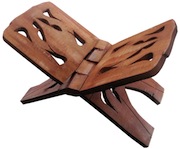I attended a yoga workshop titled Healing Physical and Emotional Traumas at the Mind Body Fitness conference in Toronto on April 26 and 27. The somatic work was much needed. Not only did I open physically, but the immersion opened new avenues of thinking for me. It’s now too basic to just say that the body is the seat of trauma and memory, and that personal history is inscribed in our very physiological responses. I think I am slowly arriving at a deeper understanding of how the collective history – macro, socio-political – is inscribed on the collective and individual body. We internalize history by forming collective memory which is recorded and colletivized through rituals of remembering. When it comes to traumatic events (and, let’s face it, history is non but trauma), unless these rituals are designed consciously with the intention of healing through somatic engagement, trauma is left unresolved. And, eventually, unresolved trauma develops pathological dimension. That could explain why victims turn into perpetrators.
I saw a deeply troubling example of unresolved trauma in the documentary Bassidji on Wednesday night at newly inaugurated Docunight. I found the filmmaker’s approach problematic, but don’t want to get into that here. The first 20 minutes were really hard to watch as the camera stayed on barren landscapes, where the Iraq-Iran war was fought for eight years, showing masses of people walking through designated paths and spaces and visiting sites and performing actions all orchestrated as a collective ritual of remembering the Bassidji war deads, elevated as martyrs. Aside from its obvious propagandistic dimension, this ritual of remembering functions constantly re-traumatizes the participants and thus keeps them politically in line with the masterminds. The same is true of the mnemonic rituals formed around Sept 11/2001.
I’ve been thinking about how to make the performances collective and participatory. One scene in the documentary struck me deeply. People passed through a make-shift gate (which immediately reminded me of what I had proposed for Summerworks) to entered a circular arena where several copies of Quran were placed on traditional book holders around the arena. People would start reading verses where the last person had left off. And they would leave the bookmark where they stopped for the next person to pick up from.
The collective methodology which relies on a very simple agreement and requires no negotiation is very effective. Of course, there is cultural tradition of Quran-khani (recitation) which people know about already. But the simplicity of the process makes it possible to transpose it into different contexts. Sometimes in literature classes or book clubs people take turns reading from a text. (We did a bit of that in the yoga workshop too.) Approaching it this way would open up the reading process. This is more along the lines of participatory processes I’d proposed for Summerworks and the summer residency in Quebec (neither of which was accepted). Anyway, more time is needed for this to gel.
This week’s content production was mostly focused on Sayyida Salme aka Emily Ruete. I have a base draft which includes passages I’ve selected from her memoirs. Also some visual material collected. I started working on Sampsonia aka Theresia Sherley today. Hers will be an interesting challenge because there no writing left by her (except a letter she’d apparently written in support of her husband but I haven’t come across the text of the letter yet).
It occurred to me today that doing this project has been like traveling. I’ve been to 19th century Zanzibar, 17th century India, 16th century Persia, Elizabethan England, etc. It’s so exciting. A lot of work but the rewards are a lot too.
Also had a conversation with Haleh Niazmand who invited me to spend some time with her in Oakland this summer to work on my embodied writing methodology which needs lots of experimentation and plenty of space. This may be a good alternative for the residency I wanted. Biggest advantage: No need to write f#$*ing proposals 🙂 Aside from that, Haleh and I have been in creative dialogue since 2000 (wow!) and she has a super smart no b.s. critical mind, strong conceptually and aesthetically, so she’s my go-to person when I’m ideating and/or experimenting and need feedback. We have very different approaches to our art making which makes the conversation rich and rewarding. So I may take her up on the offer and go down to California after the Montreal Encuentro. Logistics to be worked out.
